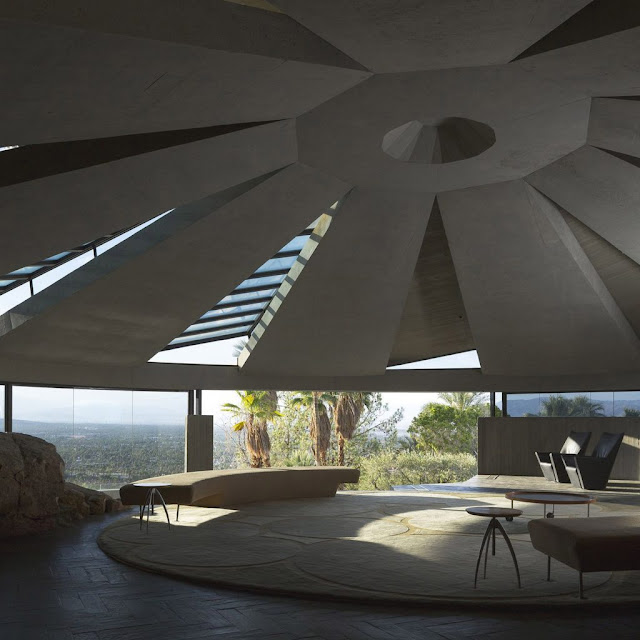From the CHIASMUS archive: June 25, 2019. MONUMENTS OF ARCHITECTURE AND CREATORS OF THE TRANSCENDENCE - JOHN LAUTNER (PART 1)
(Images from Zillow and Dezeen)
In this series of Monuments of architecture and creators of the transcendence, we started with the most iconic and fixed concept of architecture known to humanity – the great pyramids of Giza that have stood as a testament within its grand design, with a shape, never seen before prior to its creation. Three triangles, joined at a pinnacle point to form the pyramidal shape. The scale, at its time in history was beyond anything ever seen or conceived by human ingenuity. An awe inspiring spectacle that attempted to place man alongside his gods, an impressive statement of defining human significance within the natural world. To live as an immortal in what the ancient Egyptians believed was the afterlife. To which, even in its illusiveness, stands as the final step in preparing a design that will assist in the journey to the next world. But these monuments that remain defiant today, the Egyptian civilization that built them has not - a poignant reminder for all of humanity that structure, the relics of ancient architecture may outlive all of us.
Architecture, as a modernized industry in its effort to build and sustain, as discussed earlier in regards to the two basic components of architectural theory, one 1900's Modernism and the other of later Post Modernism. So, when we look back the grand monuments of the past, they were built without any ideology pe se, rather created as spiritualist concepts – not with an assumed theorization, yet, even though the ancient Egyptians who were not graced with the lineage to Kings and Queens, may have been denied the access to be personified within with the grandeur of the Pyramids , apart from its visual importance. Their design and projection of that time, ensured the greatness of Egyptian engineering was embraced by the peasantry, small models were sold to the populous, even scaled down versions of tombs placed in the yards of the wealthy. It is no doubt, beyond the spiritual desire, that designed structure has an impact of a society and this is where the push and pull of two aspects of idealogical theory in architecture will at times try and reassert itself as a purpose. Yet, one aspect, unmistakable in its comparability, beyond the spiritual and the variants of architectural theory. A human trait that is solely of our evolution. Is the ego. Which, in its pure motivation, is what builds these monuments, nothing else. And the ego is a powerful motivation tool to create, despite also having a curse of relying too heavily on the idea of the eternal, which can lead ultimately to its destruction.
Yet, when modernism became the stalwart purpose for Western more so American technological power and might, particularly after WW2. The modernist idealism of science and the power of what was visualized as human potential, became so intensified as an art and society movement, we begin to see these architecturally designed structures form across cities and their outlining suburbs. There is no other American architect who has been able to imprint the modernist template as intensily as John Lautner who personified that vision, the homes and buildings which he created, to become immortalized not only as the tangible, but also of a fantasy, the fictional expressed in movies and popular culture. It becomes hyper-real within its encompassing power-base that we know proceeds the American dream.
___
A.Glass 2019




Comments
Post a Comment